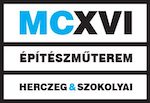+ ALBA ARENA INTERIOR DESIGN, SZÉKESFEHÉRVÁR
| Location | Székesfehérvár |
| Investor | Municipality of Székesfehérvár |
| Floor area | 20 000 m2 |
| General planning | Székesfehérváry Városfejlesztési Kft. |
| Lead Architects | Mihály Balázs DLA, Tamás Attila Tarnóczky |
| Architect designers | Mónika Bordás, Balázs Falvai, Márton Nagy, Tibor Tánczos, Dávid Török, Építészkohó Kft., DMB műterem |
| General interior designer | MCXVI Architects |
| Leading interior designer | Gábor Szokolyai |
| Project manager interior designer | Gábor Hajdu |
| Interior designers | Júlia Hegymegi, Katalin Imre, Anna Szuhányi-Nagy, Dávid Kálna, Balázs Falvai, Dávid Török, Bettina Ónodi, Angéla Soltész |
| Graphic design | Ákos Polgárdi, Ágnes Rubik |
| Photos | György Palkó, Gábor Szokolyai |
| Status | interior consturction plan |
| Contractor | Market Építő Zrt. |
| Project year | 2017-2019, 2022-2024 |

 Magyar
Magyar
